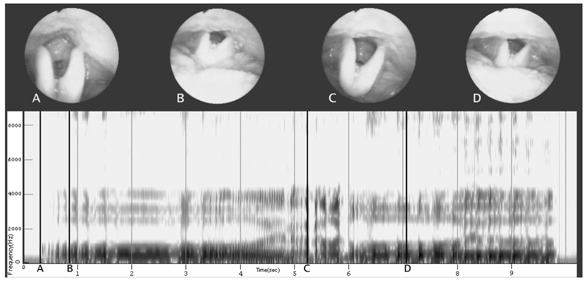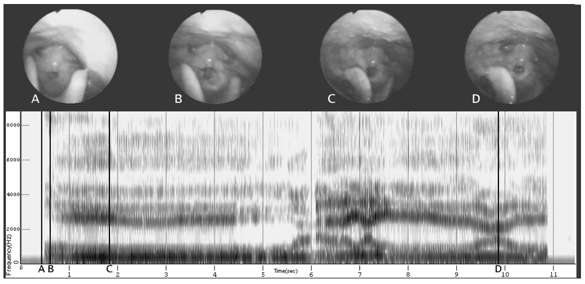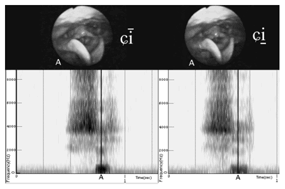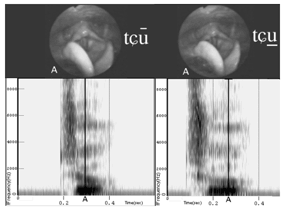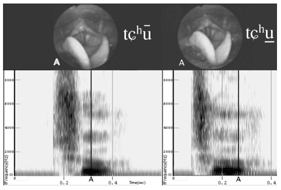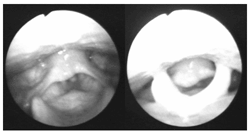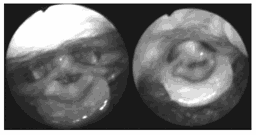|
|
Laryngoscopic Analysis of Tibetan Chanting Modes and their Relationship to Register in Sino-Tibetan.
Presented to the International Conference on Spoken Language Processing (ICSLP) by John Esling.
Abstract: To investigate how the articulatory structures of the larynx and pharynx behave in Tibetan chanting, we obtained laryngoscopic video sequences of several phonemic contrasts in Tibetan and of two principal chant modes: a “high” chant which adopts raised-larynx posture with the tongue and epiglottis retracted, and a “deep” chant which adopts lowered-larynx posture with an open pharyngeal area but constricted ventricular ring immediately above the glottis and ventricular/mucosal channeling of airflow. The two chants reflect different modes of the laryngeal sphincter mechanism: one with aryepiglottic approximation but without trilling; the other with only the ventricular component. Aspects of phonemic patterns found in the three Sino-Tibetan languages we have observed laryngoscopically (Yi, Bai, and Tibetan) can be seen in the way the two chant modes are produced in Tibetan. The high chant resembles “tense” register in Yi, while the deep chant resembles “tense/harsh/low-tone” register in Bai. {view PDF of text}
Note: click on the following images to view them in much greater detail. Resulting images are large and may require some time to download. Each image has a corresponding video file that may be viewed by clicking on the links provided. All video is in QuickTime format and uses MPEG4 encoding; you will need QuickTime to view them.

